Mammals
Media

Species Types
Scientific Name
Myotis grisescens
Description
Gray myotises are difficult to distinguish from other mouse-eared bats. A key identifying feature of the gray myotis is that its wing is attached to the ankle and not at the base of the toes. It’s an endangered species.
Media

Species Types
Scientific Name
Myotis sodalis
Description
The Indiana myotis, or Indiana bat, summers along streams and rivers in north Missouri, raising its young under the bark of certain trees. It is an endangered species.
Media

Species Types
Scientific Name
Myotis lucifugus
Description
The little brown myotis (little brown bat) is one of our most common bats, but populations are declining. White-nose syndrome has taken a heavy toll in northeastern states. This species is now listed as vulnerable across its range.
Media

Species Types
Scientific Name
Dasypus novemcinctus
Description
There’s no other animal in Missouri that can be mistaken for an armadillo! In the 1950s, they were not considered residents, but now they are regularly found in the southern half of the state.
Media
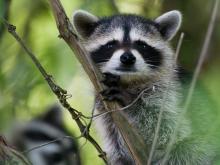
Species Types
Scientific Name
Procyon lotor
Description
When you see the black mask and striped tail of this medium-sized mammal, you know you’ve spotted a raccoon. These nocturnal omnivores are clever and adaptive.
Media
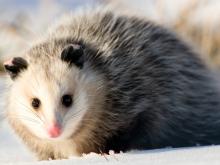
Species Types
Scientific Name
Didelphis virginiana
Description
The Virginia opossum is North America's only native marsupial. Its life history, biology, and habits make this nocturnal mammal worthy of appreciation. What other mammal in our state can hang by its tail, play dead, and carry its young in a pouch?
Media
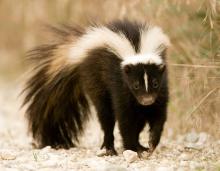
Species Types
Scientific Name
Mephitis mephitis
Description
Skunks are omnivorous mammals notorious for their ability to discharge an obnoxious scent when provoked. The striped skunk is the most commonly encountered skunk in our state.
Media

Species Types
Scientific Name
Canis lupus
Description
The gray wolf originally ranged throughout Missouri, but with settlement the species was gradually exterminated. While there is no evidence of a breeding population in the state, wolves are listed as a protected species in Missouri, and they occasionally wander into Missouri from northern states.
Media
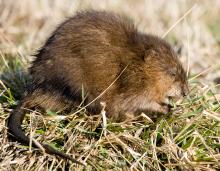
Species Types
Scientific Name
Ondatra zibethicus
Description
The common muskrat is one of the most abundant commercial furbearers in Missouri. This semiaquatic rodent has benefited from the construction of thousands of farm ponds throughout the state.
Media
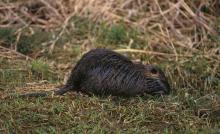
Species Types
Scientific Name
Myocastor coypus
Description
The nutria is a large aquatic rodent native to South America. They were brought to the United States for the fur market. In Missouri, nutria are sometimes trapped in the southeastern part of the state.
See Also
About Mammals in Missouri
More than 70 species of wild mammals live in Missouri: opossums; shrews and moles; bats; rabbits; woodchuck, squirrels, beaver, mice, voles, and other rodents; coyote, foxes, bear, raccoon, weasels, otter, mink, skunks, bobcat, and other carnivores; deer and elk; and more. Most of us recognize mammals easily — they have fur, are warm-blooded, nurse their young, and breathe air.





















